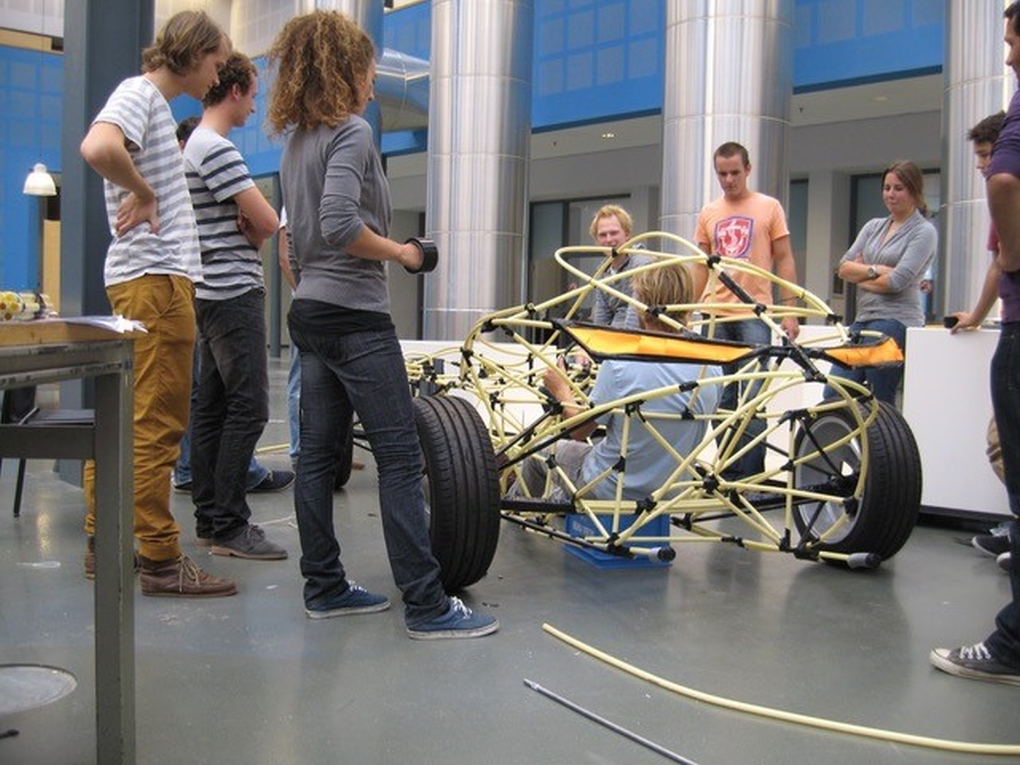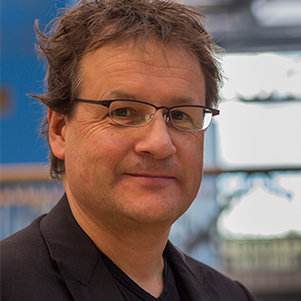Future Mobility Design
IO-MI-240
Human mobility has evolved into a complex and multi domain challenge, which cannot be addressed in the narrow scope of a single industry. This minor is the evolution of a minor Automotive Design and anticipates the path on which the industry’s scope gradually enlarges from vehicle design to a holistic mobility design approach. How to design mobility means that are meaningful within society and address both individual wants and collective needs? How to design seamless mobility, while preserving the underlaying functional and emotional values of individual mobility? Fundamental questions that dictate a multidisciplinary, holistic design approach, through a context driven design process.

Faculty of Industrial Design Engineering
ECs: 30
Language: English
Maximum participants: 48
| Non-selection minor: | |
| Selection minor: | - |
Education methods
Projects, lectures, exercisesFor whom?
University students from the 'designing and engineering' faculties from universities of Technology i.e., Industrial Design, Aerospace Engineering, Automotive or Mechanical Engineering and Architecture. Applications from Technology Management (TBM) are also being considered. Affinity with human mobility helps and curiosity is a must!
What will you learn?
The encompassing mobility domain is more complex and challenging than it ever has been, both from an internal as from an external perspective. This autonomous programme provides knowledge on automotive and mobility design and technology, and an understanding thereof in specific societal contexts. Because of the complexity of the human mobility domain and the high level of design execution in mobility-design, all knowledge, insights, and experience derived from this minor, are applicable and valuable in other complex systems and domains.
- You will learn how to design new meaningful products in the field of mobility. Products can be new policies and services, new vehicles in the widest possible sense, and the mobility system that incorporates all these entities.
- You will learn how to work with a context driven design process.
- Develop skills to visualize ideas appropriately throughout the design process, and to visually express all knowledge derived from that design process, through various visualization techniques. You will understand their respective roles and values in multidisciplinary design teams.
- Learning secondary skills like design project management and presenting your work in a professional manner, both verbally and visually.
- You will understand the merits and the value of design research and participate in research projects.
- Working in international and multidisciplinary project teams some projects, while other projects are individual.
- You may not always find yourself in your comfort zone.
Course overview
Students execute three project courses, growing in depth, width and weight, from automotive styling and technology to the design of an integrated mobility system. Those three projects together are framed by, and structured through the context driven design process Vision in Design. Together they are one full walk-through of this context driven design process. Necessary knowledge is acquired through lectures, research and skills development.
-
The minor’s three project are framed by a guiding course ‘Human Mobility’, safeguarding their coherence and connection. Lectures address context driven design, design project management and program coherence. Throughout the program, students compose their own reader, their final individual deliverable.
-
In the first project ‘design outside-in’, the emphasis is on visual qualities of a vehicle. How do people perceive and value (automotive) styling? The goal is to understand design ‘language’ and the ‘level of expertise’ that is required to communicate with, or fulfil a role within, the domain of vehicle design. You learn the merits of branding which you will apply on a larger scale in the next projects. Lectures include aesthetics, branding and aerodynamics.
-
In the second ‘design inside-out’ project, students design vehicles that enable people to fulfil their mobility needs in a meaningful way, in a short-term future context. Product-user interaction is investigated qualitatively as much as quantitatively. Lectures include ergonomics, safety, vehicle dynamics, technology and structures, package design and near future developments such as autonomous driving.
-
In the third ‘Mobility Systems’ project, all comes together in designing a long-term future mobility system. Teams research a future context and design an integrated mobility system. After which, each team member individually designs a full vehicle within that mobility system. Ethical choices on sustainability and inclusion help the designer to take a stand. Bringing together technology, usability, and styling, elicits what the designer wants to accomplish with and for people. Lectures include the taxonomy of human goals, mobility systems (policies, services, and products), sustainability and the build environment.
-
Necessary skills, such as visualisation in the widest possible sense, are being developed in parallel in two blocks each week. One to independently (further) develop your skills, and one that addresses specifically those skills that you need in your current project.
Register for this minor
Minors of the faculty of Industrial Design Engineering are open only for students from academic programmes in the third year of their Bachelor studies.
Contact

Elmer van Grondelle
- +31 (0)15 27 89488
- automotivedesign-io@tudelft.nl
- Publications
-
Room C-3-220
"I am not here to teach you. You are here for my entertainment."